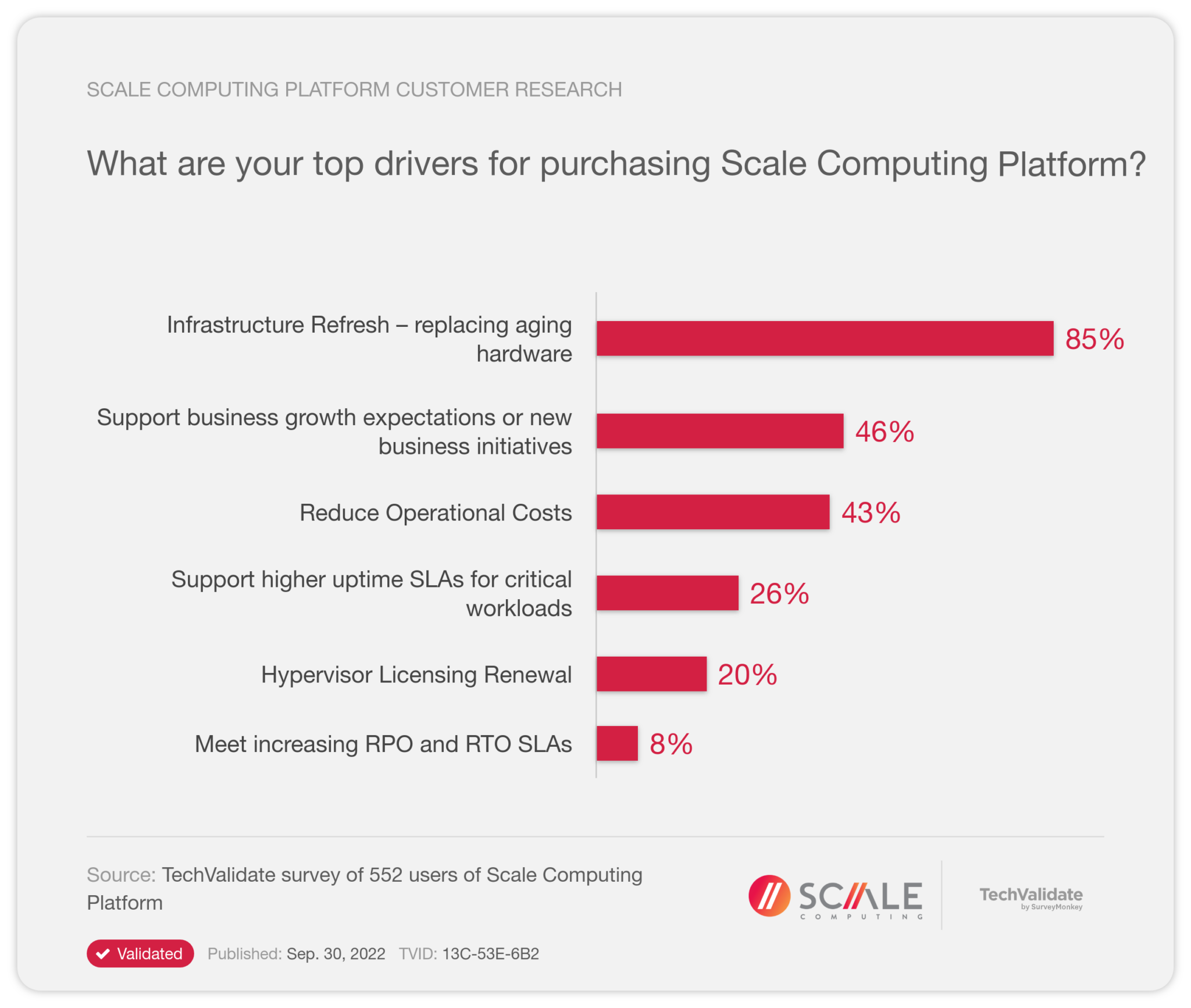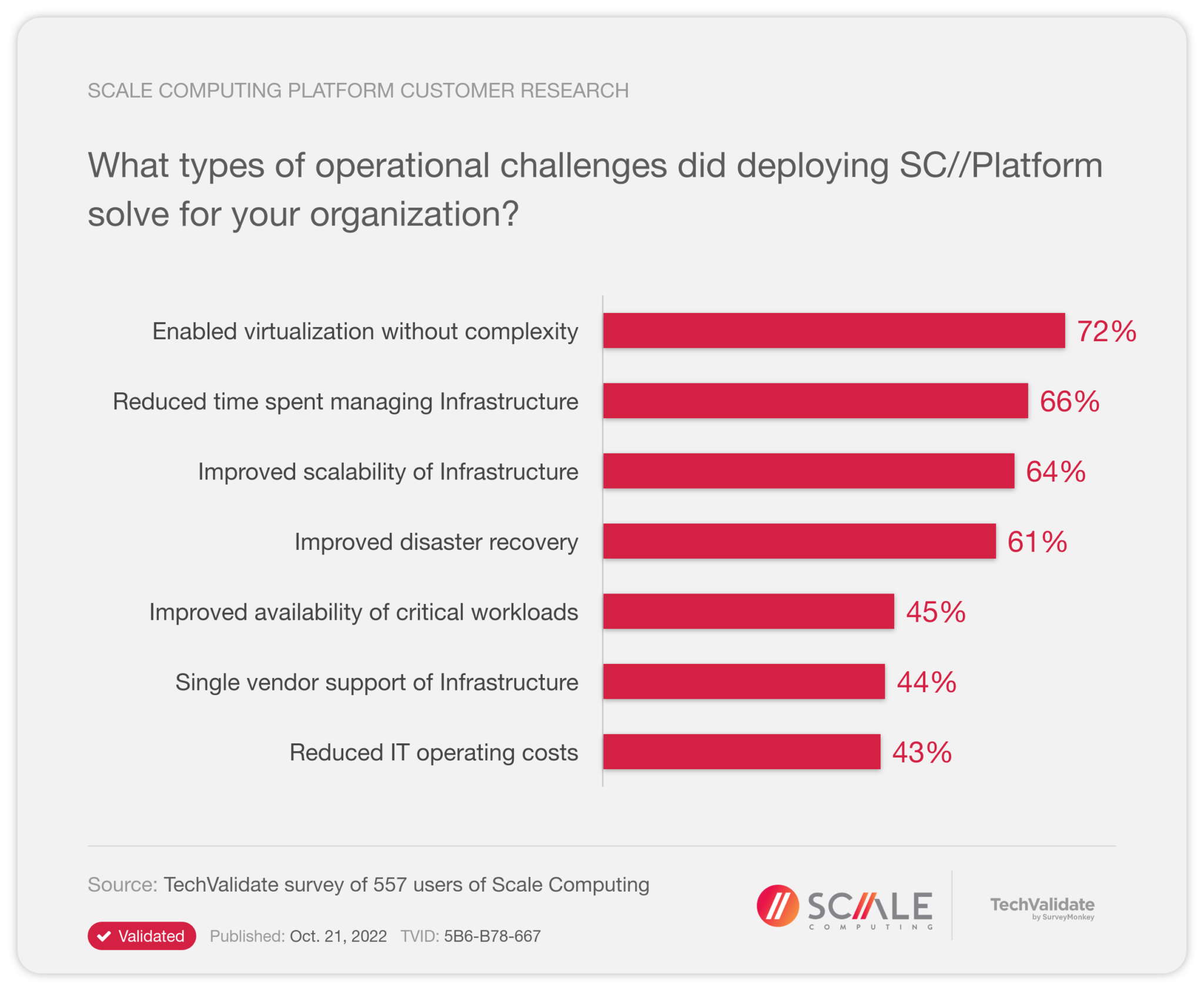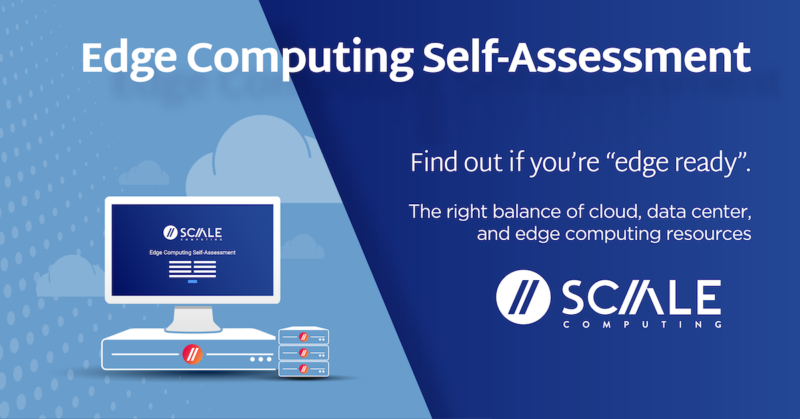
Edge Computing Self-Assessment
Scale Computing created this Edge Computing Self-Assessment tool to help you understand and think through the unique needs of your organization. The personalized report generated from 10 multiple-choice questions can help you identify and explore your current and future IT infrastructure needs and preferences.
How can edge computing bring new opportunities to your business? What’s driving your need?
Moving to the edge provides organizations with increased agility and opportunity. It can bring significant changes, and businesses will want to be in the best possible position to adapt.
“Edge computing is part of a distributed computing topology in which information processing is located close to the edge—where things and people produce or consume that information.” Gartner
Though edge environments are supported by some form of centralized processing, running applications locally, on-premises solves many of the intrinsic challenges of data centers and cloud computing.
Cost
Initially, the objective of edge computing was to reduce the cost of moving raw data from the source to enterprise data centers or clouds. Devices generate massive amounts of data, much of which has value when it can be properly collected and analyzed. But bandwidth isn’t free and transferring all that data to the cloud for processing is both impractical and cost-prohibitive. Edge computing allows all this rich data to be collected and processed locally.


Latency
Edge computing brings data storage and computation closer to the devices that gather the data, rather than in a central data center far away. This aims to prevent issues with latency that can affect an application’s performance, especially with real-time data.
High Availability
Planned and unplanned outages have far-reaching financial effects, so downtime of any kind is simply unacceptable. Failover, redundancy and resiliency are fundamentally designed into every aspect of edge computing infrastructure to create a non-stop computing environment unlike any other.


Regulatory Compliance
Compliance can be complicated. While organizations moved to the cloud for its many advantages for IT deployments, its dispersed infrastructure inherently makes compliance with regulations and data sovereignty a challenge. Cloud deployments could extend into different regions with different data sovereignty laws, but complying with each region’s regulations may hinder an organization’s business growth without on-premises infrastructure.
Scale Computing Platform customers report the following benefits
Customers find the SC//Platform infrastructure solution is affordable upfront and delivers superior total cost of ownership over the life of the platform.
Scale Computing HyperCore software replaces virtualization software, disaster recovery software, servers, and shared storage with a fully integrated, highly available system.
Implementing and deploying SC//Platform is easy. The simplicity of the self-healing platform, driven by automation, allows customers to focus on their work, rather than their infrastructure.
TechValidate Customer Research Survey Results



Edge Computing
Self-Assessment Tool
We developed this Edge Computing Self-Assessment tool to help you think through the unique needs of your organization. While no assessment provides an exact formula, the personalized data our new tool offers can help you identify and explore your needs and preferences.